The Lord of the Rings: The Card Game Review
July 5, 2012 by brennon
The Lord of the Rings is a fantastic story of adventure and peril and we’ve been allowed to travel along with the Fellowship only through games like Games Workshops Lord of the Rings Strategy Game. Well Fantasy Flight Games got hold of the rights to the book and have created what has become one of the most challenging and intense card game experiences you will ever have.
I’m not kidding around. Seriously this card game is one of the best I have ever played, and that’s even before you have got into the components and gameplay aspects on offer. So unsheathe your sword, hoist your axe, and grab your bow for a look at The Lord of the Rings: The Card Game…
Components
Being a card game you can safely assume what the main components of this game are. To begin with inside the Core Set for this game (the core set will be the focus of this review) are the cards for three different quests. The first involves you delving into the dark of Mirkwood, the second travelling down the River Anduin and the third rescuing one of your lost comrades from the dungeons of Dol Guldar. Each of these quests has a number of ‘spheres’ showing you which cards to add into the deck. Most decks have a sphere of cards that are individual to it but more often than not there will be crossovers. For example the Eye of Sauron cards might appear in two of the three quests.
Each of these spheres can be broken down into a number of different types. The first are Enemy cards. These are the foes that you will encounter as you traverse the lands of Middle Earth and range from typical enemies like Orcs and Goblins to more exotic and deadly Marsh Adders and Hummerhorns. Enemies have Threat values, Attack and Defence as well as health points. Some have added text which might effect a combat with them including both when revealed text and shadow text. I will get to shadow text when we look at gameplay.
Next up are the Location cards. As well as travelling to complete the main quests you will find that your heroes might have to take a detour to other locations from Middle-Earth. These Locations act as barriers towards your final objective and while the vast majority of them are just bad, occasionally you will find one that helps you out. Maybe it’s readying a hero or allowing you to draw a certain amount of cards. Much like Enemy cards Locations have card text and a Threat value which you will have to keep a close eye on.
Last of the quest decks cards are the Treacheries. These cards are flat out bad and are worked in as lovely little surprises for you to encounter as your traveling through Middle-Earth. There are ways to avoid them but more often than not you are going to end up having to deal with the consequences when they are revealed from the top of the draw deck. Unlike the other cards they don’t stick around in the play area but are either immediately discarded or attached to a character if the card text specifies.
Against these cards, trying to bring down your fellowship you have your own decks. The broad spheres for the game can be split into four catagories. Tactics, Lore, Leadership and Spirit. The Tactics deck contains the mighty warriors of Middle-Earth which includes the likes of Gimli and Legolas. Lore focuses on healing through the elven power of Glorfindel. Leadership sends the likes of Aragorn and Gloin into battle charging forwards to guide the rest of the party. Finally, Spirit are the questing deck. They have many cards to banish shadow and forge a path through the darkness to complete your quests.
All of these cards come with some wonderful art work on them depicting the heroes of Middle-Earth, three for each sphere to be exact. They have their own special rules, and everything that the quest deck contains including defence, attack and willpower to head onwards. While most of the time you will find that you play with a one sphere deck (so all Tactics, all Lore etc) you can mix and match as much as you like. However, as I go into the gameplay you will realise the perils of overstretching your resources. This is deck building but with a seriously Troll punch to it.
The last of the components come as a selection of different tokens for marking wounds, progress on the quest track and your resources that you can spend getting cards out onto the table. All of these are essential and quite Tolkienesque in their execution. A brutal wound shows your damage, a pair of hobbit feet the progress and a gem like symbol your resources. There is also a First Player token which is very important within the game as monsters usually attack within a simple initiative order system. That too has a battle artistically adorning it.
There is also a Threat Dial that allows you to calculate your threat and how close you are to the limit of fifty. Once you hit that you're out of the game! Of course your threat can go down, but that is a very rare occurrence and only really happens when Gandalf is around.
So with a quick look at the components over, let's hunt some orc!
Gameplay
The game begins with you selecting a quest from the three available. If your starting out I highly suggest picking the Mirkwood quest. Not only is it the easiest of the three but it's also the start of the story so well worth getting a handle on that first! Sort the cards for the quest deck looking at the spheres it requires (in this case Spiders, Orcs and Trees) and shuffle them very, very well. Place these to the side of the Quest and then turn to your own decks.
A typical game of Lord of the Rings will be played with two people so when you choose your deck make sure to compliment each others choices. For example if you choose Tactics then the other player might want to pick Lore allowing him or her to heal your party as they get wounded. There is no hard and fast rule that you SHOULD do this but it becomes good practise for when you start mixing decks. Choose a sphere you wish to travel with and shuffle the appropriate deck, prepare your heroes in front of you and draw six cards. You may then mulligan (redraw) if you wish, shuffling the deck and drawing a fresh hand.
Once this has been done you're ready to take to the road. Read the quest text carefully and follow any instructions it has on it. For example if we look at the quest in Mirkwood it requires you to put an Old Forest Road and Spider card into play. Now you're really ready to start and the first player looks at his hand of cards and decided if he wants to spend any of his resources.
Here is the important part of the game I was talking about earlier. With these single sphere decks you will always have three resources from the same symbol, say Tactics. You can only buy cards with resources that relate to its sphere. So if you had a Lore card in your deck and no Lore resources spare to spend, you couldn't put it down on the table no matter how many Tactics resources you had at your disposal. With a single sphere deck this isn't usually a problem and your only decision is how to spend them, but with a mixed party you will potentially find a problem getting down high cost cards with a single hero generating that resource.
The cards available to you will be Allies, Attachments or Events. Allies like Erebor Hammersmiths, Faramir and even Gandalf are played and help you travel on the dark road. Attachments take the form of arms and armour, maybe symbols of office and give you statistic boosts amongst other things. Events are played as interrupts whenever an action occurs like banishing a shadow card if it appears in front of you or stopping an enemy from attacking.
Once the first player has chosen their cards and paid for them the second player does the same and you move onto the next step, the Quest phase. Here your characters Willpower (a star in the top left corner) comes into play. You must decide who will go out on the quest and lead the way through the forest. The higher the Willpower the better but in another interesting twist to the game once a character has committed to a phase he is exhausted and cannot be used again until next turn! So if you send Aragorn off to pick a path through the Brown Lands he won't be able to defend or attack in later stages.
Once characters have been committed, cards are drawn from the quest deck dependant on the number of players and placed in the ready area between you. The amount of Threat each creature or location has is added up and compared to your Willpower score. If you have more, the difference between their Threat and your Willpower is added to the current quest. If the game has more then the difference is added to your threat. You turn the dials up the appropriate amount. Once you hit fifty, your quest is over.
Next up is the engagement phase. Here, the creatures within the ready area compare their engagement value to your current Threat. If you have equal to or more threat than the creature it will charge towards you ready to bring you down. You can voluntarily engage an enemy during this stage and it is usually a required action, especially if a deadly warlord is about to charge in and slaughter poor Eowyn! Once you have decided who will be engaging the enemies you declare a defender for each one. This allows you to try and soak the attack. You can allow an attack through undefended but this is sometimes a course of last resort.
Each creature is then dealt a shadow card. This is drawn from the quest deck and is flipped over. Anything below the shadow text line is then added to the monsters attack on your hero and the wounds are resolved. This is always a tense moment and usually when a whole lot of Event cards come flying out to try and protect your precious heroes. The next phase however will allow you to get some revenge.
As with Questing, if a hero or ally goes on the defence they are also exhausted but if you have any heroes left you can launch an attack back. Much like defending you declare your attacker (it could be more than one hero or ally) and match your attack against their defence. Apply the wounds as is needed and if you killed it, well done! If you didn't then it will remain to fight another day!
After this phase all cards are refreshed, you draw another card from your deck, pass the first player token and see what other perils await you on the next turn. Continue in this way until you have completed the quest, your threat hits 50 or your heroes all die horribly. I did say this game wasn't for the faint of heart!
The Verdict
Lord of the Rings: The Card Game is a seriously brilliant game. I don't think there's a co-operative card game on the market at the moment which rivals this for how utterly demanding and perilous this is. The true nature of co-op is tested in this game and you really have to take some time and planning before playing. Fantasy Flight have really gone out of their way to form a great deck builder with purpose and a solid mechanic. There aren't many exploits you can get through the tight net they have woven and the game is brutally punishing at times. However, this all comes together to make a game where when you do win, you feel like you truly earned it.
I've played the base game a number of times now, experiencing the different decks and heroes as well as mixing it up a few times too and every time you play it feels like your going through it in a different light. At one point you could be confronted with a horde of enemies ready to tear Aragorn's head off, and at others you're finding it a slog as you trudge through locations with a desperate feeling of peril hanging over your head. I think you really do feel like a member of the Fellowship when playing this game.
It's not all doom and gloom though. As I mentioned when something does go right and all the plans you laid down work out suddenly you can let out a sly smirk. It's a wonderful feeling to suddenly find Gandalf in your hand and send him out onto the table to vanquish foes and lower your threat with his guiding light, or bring down that massive spider with a battered Gimli snarling with rage. These high points really make the game worth playing.
In terms of replayability, as I stated above there are many heroes, quests and combinations that can be played but on top of that the game provides you with a scoring system so you can rate your success during a quest. This means that even if you did the first quest with some skill you always have that 'what if?' feeling as you consider how you might be able to beat your last score. It leads to some real grudge matches between you and the deck.
On the down side there are a few minor niggles with this game. The first is that you can all too easily fall into the pattern of "we can't use that hero, he/she sucks". While there is obviously strong and weak combinations of heroes it can feel a bit samey when a player picks exactly the same heroes time and time again and discourages you from trying something new. I maintain the game, while terribly hard, can be completed with any combination of the heroes that come with it. It all comes down to how you build the deck and if your luck holds when drawing cards.
To be honest though, that's probably the only bad thing I can say about this game. It involves just the right amount of luck and skill making it a perfect game to dip into again and again hoping for a better adventure.
Components: 10/10
Gameplay: 9/10
Playing Time: 1h 30mins for both Beginners and Expert Players
If you enjoy deck builder games, or Lord of the Rings then just pick this game up. It's well worth your time.
Supported by (Turn Off)
Supported by (Turn Off)
Supported by (Turn Off)




































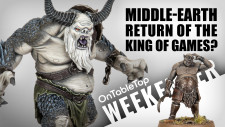




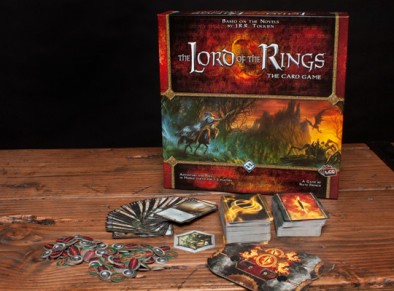
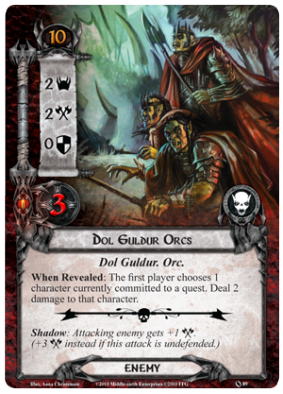
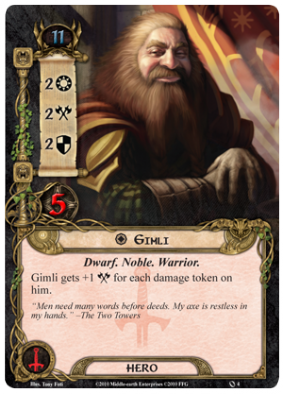
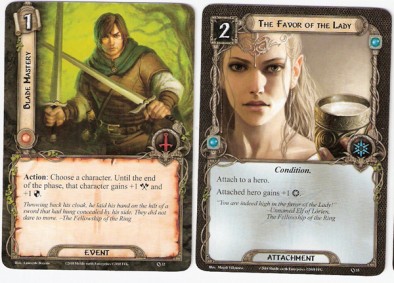
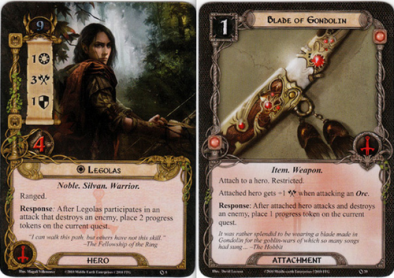
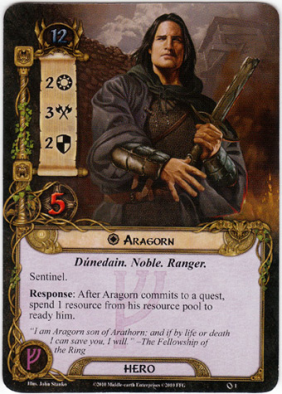
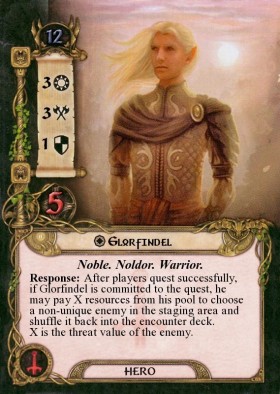



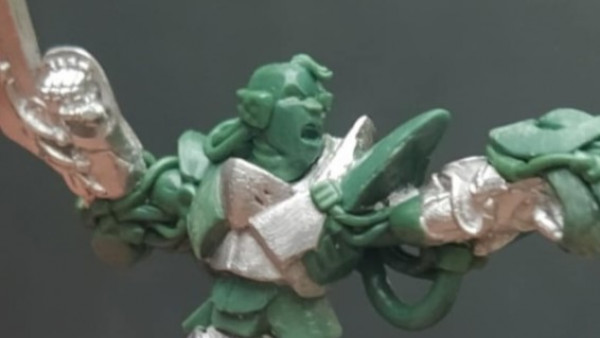




























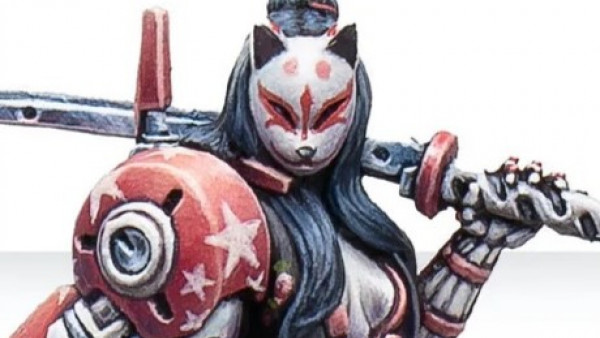


Thanks for the review – I’ve been working on the rules for my own supernatural themed deck building game and wasn’t sure which single player / cooperative games were out there to “set the standard” as it were. I’ll have to pick up a copy of this and see how things measure up 🙂
That was a very indepth and positive review.
I have never played card games before, I’m quite tempted by this though.
Love the game and although I only have the core game (looking to get the first 6 packs soon), the game is excellent. Some of the cards are brutal as I remember I was home and dry before a shadow card turned the tide completely!
Great in solitaire which is useful seeing how my kids are too young to learn yet lol.
Great review, thanks! I have the game and the expansions and am loving it! It is great to be able to play cooperatively and also solo play. Couldn’t recommend it more!
Glad you’re all enjoying the game too 🙂 Me and a few friends played one of the expansion/card pack quests last night. Return to Mirkwood (Difficulty 9!) We had a fair bit of trouble to begin with but ended up being able to just about scrape through.
I have to say having Dain Ironfoot as a character makes my all Dwarf party such a good idea nowadays lol.
BoW Ben
May have to get this as I can solo it- great game for nobby no mates occasions